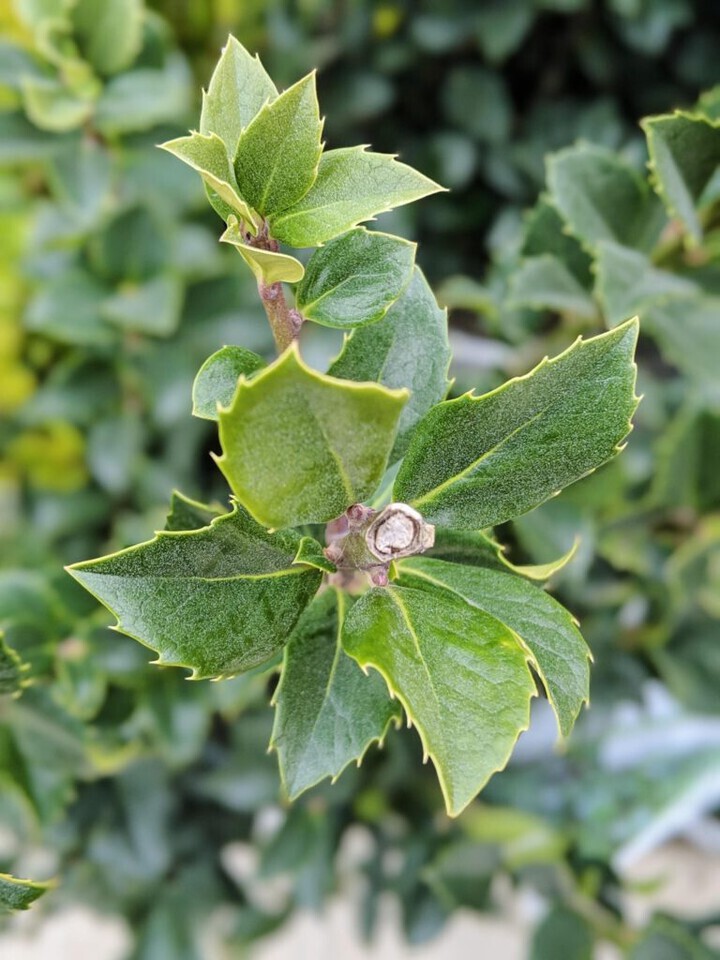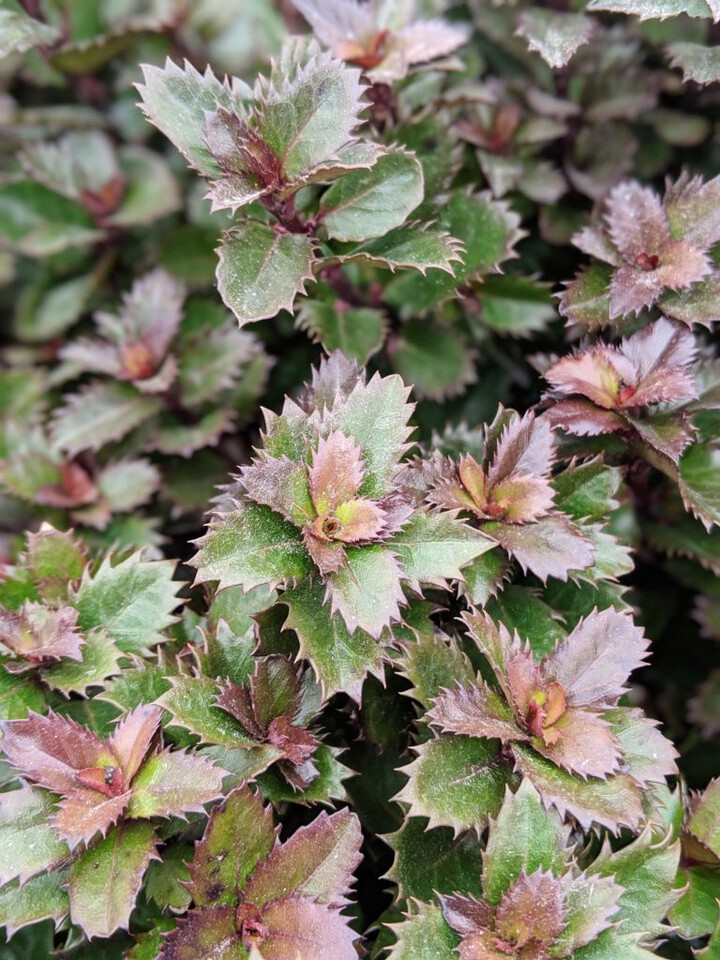Scientific Name: Ilex Opaca and Ilex Aquifolium are most common
Common Name: Holly
Common Species/Varieties: American Holly, English Holly, Common Winterberry
Common Colors: Green with white, yellow, pink, black or red berries
Plant Type: Shrub
Annual or Perennial: Perennial
Hardiness Zone: Usually between USDA zones 4-10, depending on variety
Self-Seeding: No
Bloom Season: Berries are usually mature in late Fall (do not eat!)
Grows Best In: Mostly in Full Sun to Part Shade
Fun Fact: Holly has long been associated with Christmas and Winter, but the Harry Potter series added to its popularity due to Harry Potter’s wand being made of Holly with a Phoenix Feather Core!
There are over 560 species of flowering plants in the family Aquifoliaceae! Depending on the variety, Holly’s coloring can consist of dark green leaves, blue-green leaves, and even green leaves with yellow edges. Their trademark berries can be several different colors and sizes – including white, yellow, pink, black, and red. Just don’t ever consume the berries or any part of the plant as it is considered to be toxic if ingested. Most Holly shrubs are deer resistant, with American Holly being the best option for those with hungry deer in their area.

Holly Shrubs will do well in containers or planted directly in the ground, and its branches can be beautiful when used in cut “flower” displays in Fall and Winter. Grab a tall vase, cut some pine or spruce branches as well as some holly branches, and place them in some water in the vase. For an added holiday charm, dry slices of apple and orange, and string them, along with cinnamon sticks, on some twine and drape them around the branches. You can even add tiny copper twinkle lights to finish off the cheery holiday look!
Plant Holly bushes in Spring or in Fall during cooler temperatures to put as little stress on the plant as possible. As with most new shrub planting, make sure to keep your Holly shrubs watered evenly until the plant is fully established. Holly Shrubs are drought tolerant and need only be watered during drought conditions once established. Like many Blueberry bushes, most Holly bushes need both a male and a female bush in the same general location in order to produce the bright red berries that Holly shrubs are famous for. During harsh weather conditions, it may be necessary to wrap Holly shrubs in burlap to protect them from bright sun (especially if snow is on the ground in winter!) and extremely harsh and blowing snow storms.

Holly is traditionally associated with Christmas, and this tradition goes back a long time. Holly was important to the Celtics, the Nordics, and the Druids! Holly wreaths were considered to be good luck, and were worn as crowns by Celtic Chieftains. The Holly tree is also said to represent wisdom.